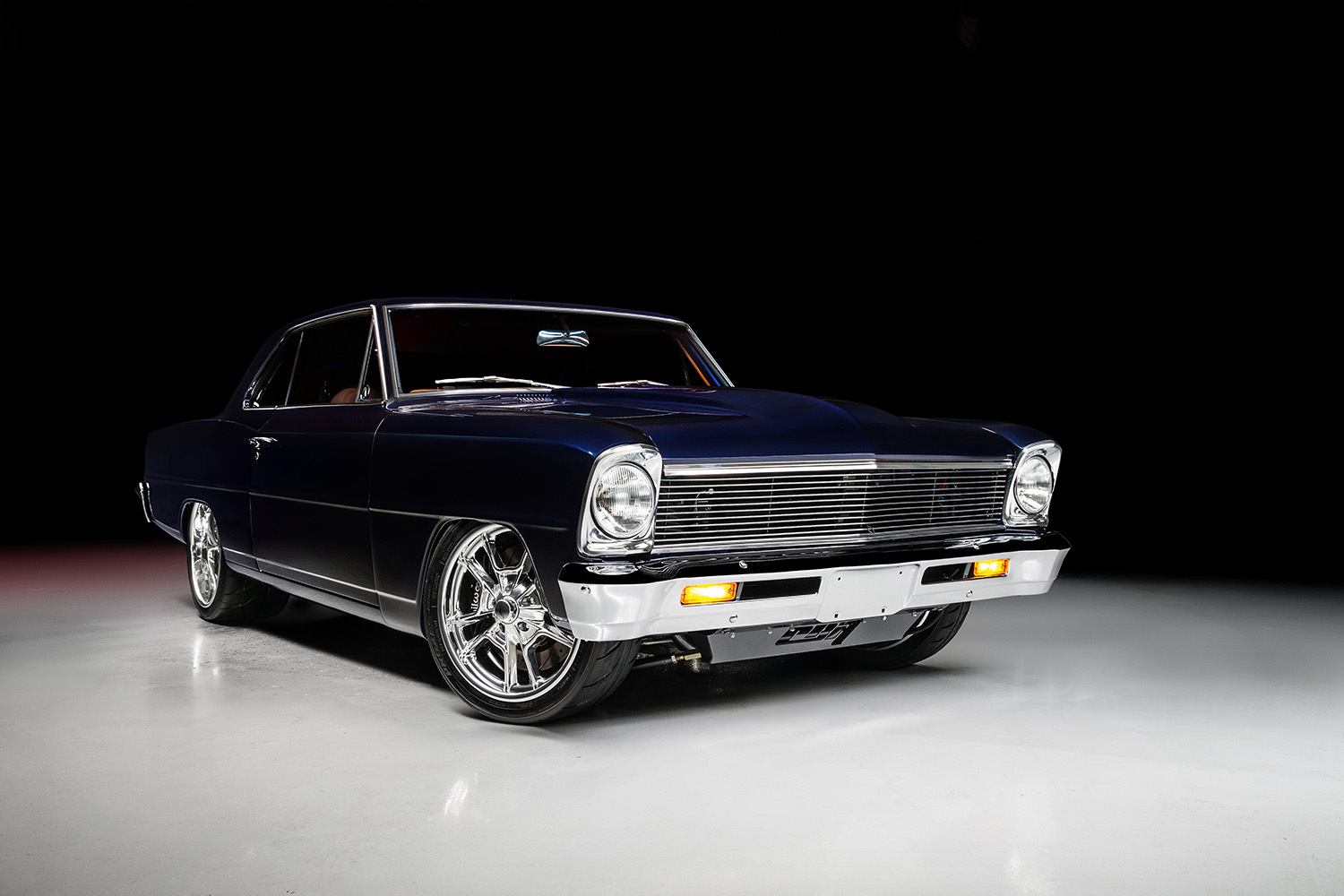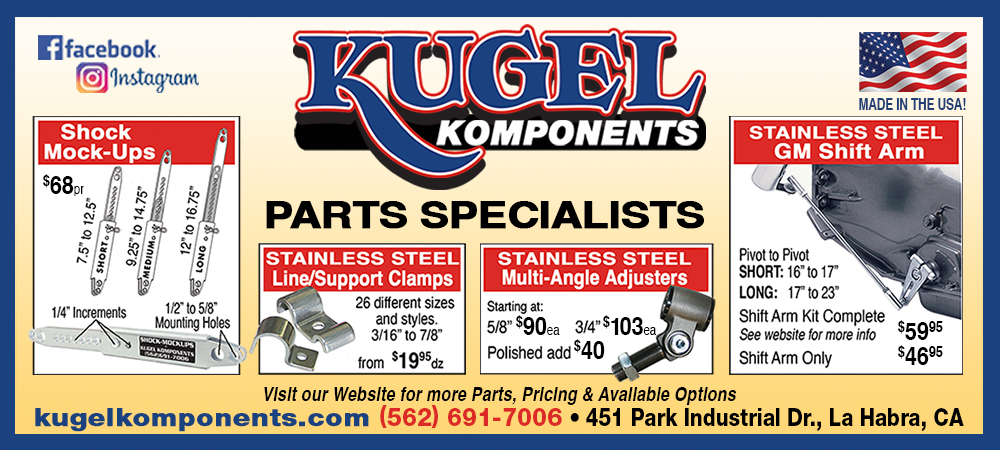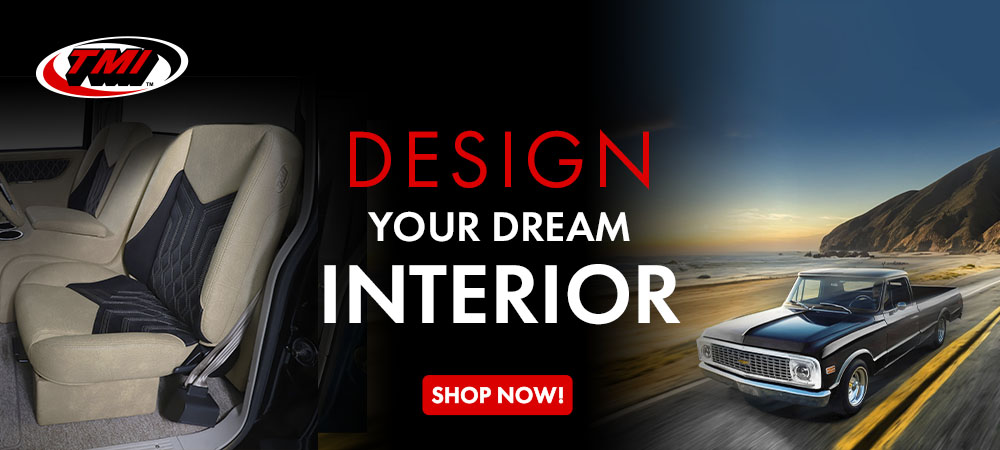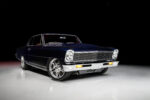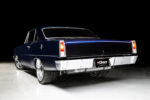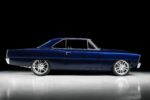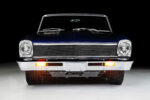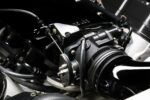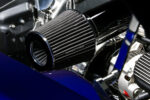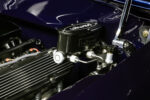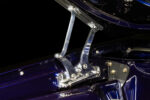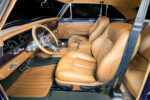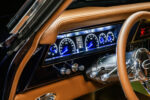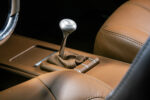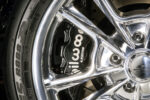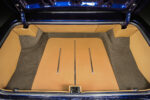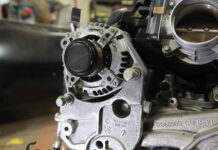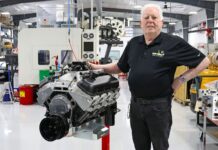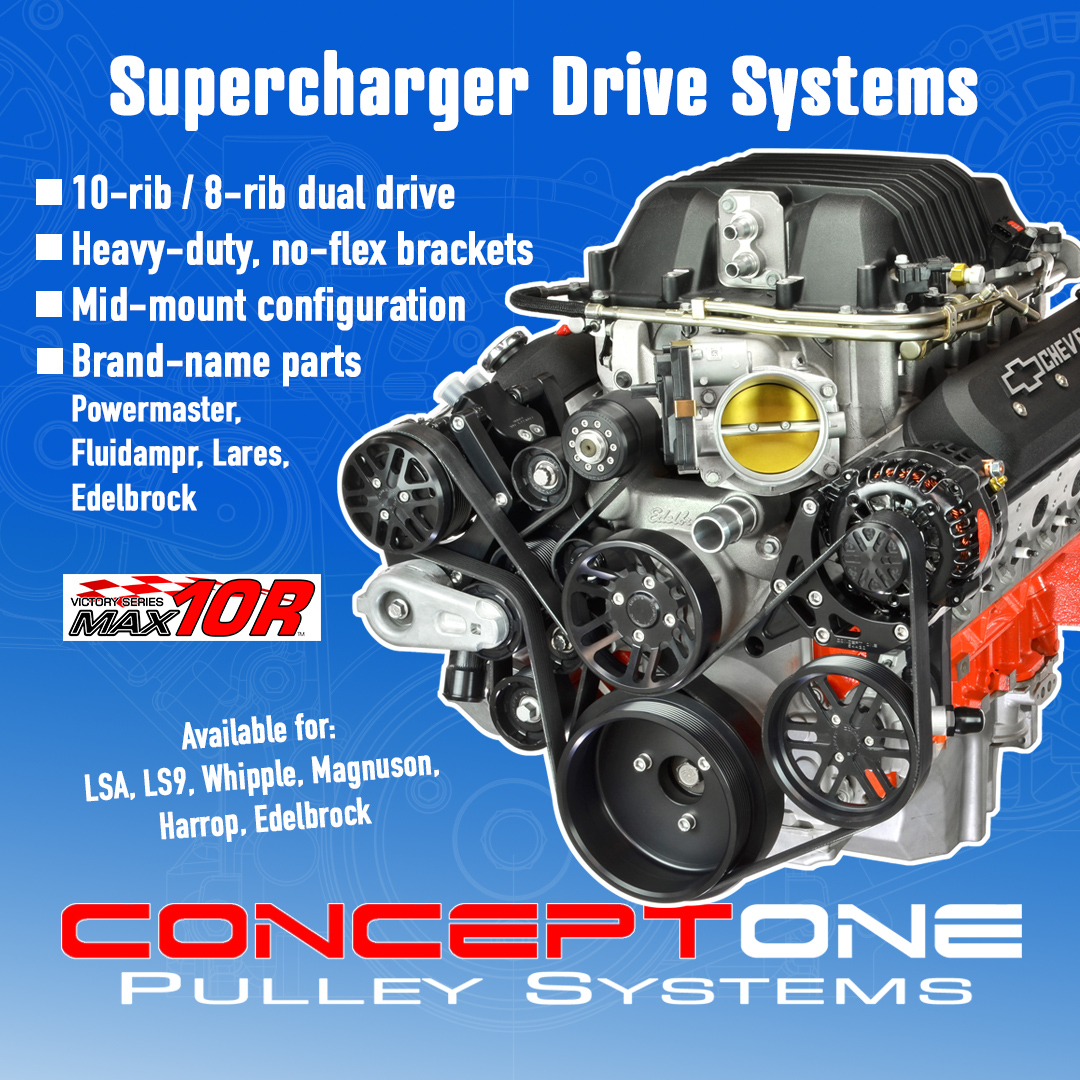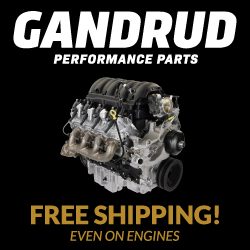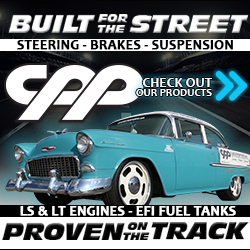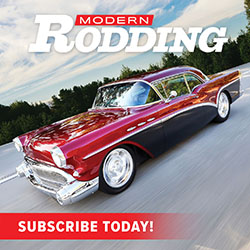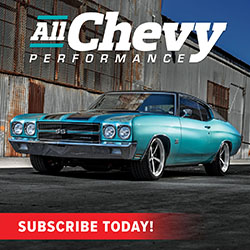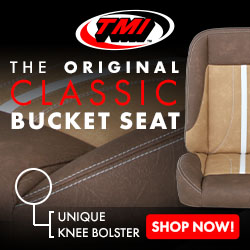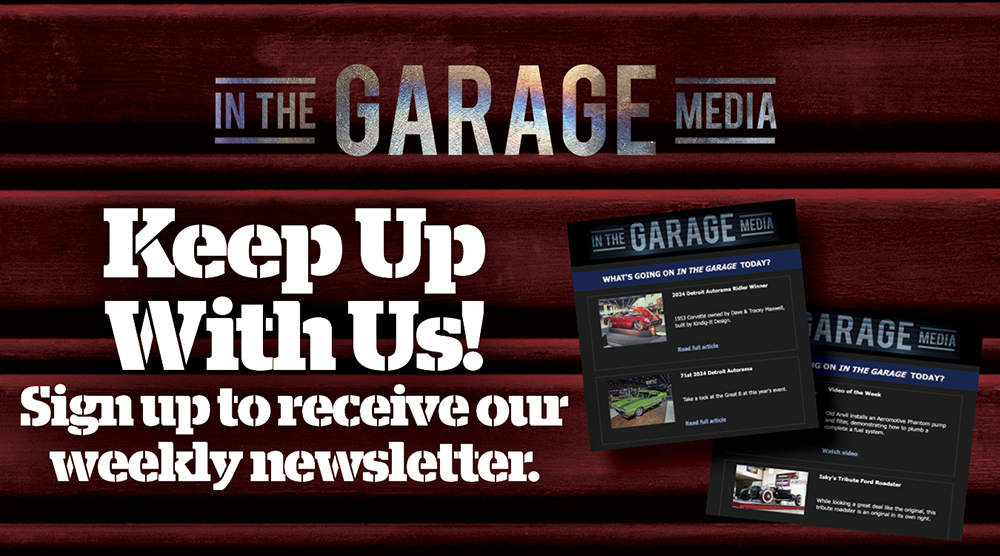By John Machaqueiro – Images by the Author
In the matrimonial realm it is a safe bet that most things are best when shared. It helps in keeping both individuals involved in each other’s lives, increases happiness, and helps promote marital satisfaction. For those couples who indulge in some form of automotive lifestyle, being on the same page is always a win. That shared vehicular enthusiasm is what set the stage for Dan and Joan West’s build of the 1966 Chevy II that you are looking at. Dan’s wrenching interests developed at an early age from a non-car rich background. He explains, “I got a job in eighth grade at the corner service station pumping gas, which led to doing some mechanical work.” Joan, on the other hand, was at the opposite end of that spectrum with a family who was in the automotive business. As they navigated through the years of married life Dan regularly worked on several Chevys that they enjoyed taking to local shows, cruises, and events. It was at the Goodguys Spring Nationals that the seed was planted to get the Nova. “We walked around and Joan would say, ‘That car is badass,’ and it was either a 1966 or 1967 Nova,” Dan recalls. “We’d go another few minutes and she would see another one and say, ‘That one is cool, too.’ That went on for two days and I realized that she really liked that type of car, so I decided to buy her one because she’s always let me do what I want and has always been supportive.”
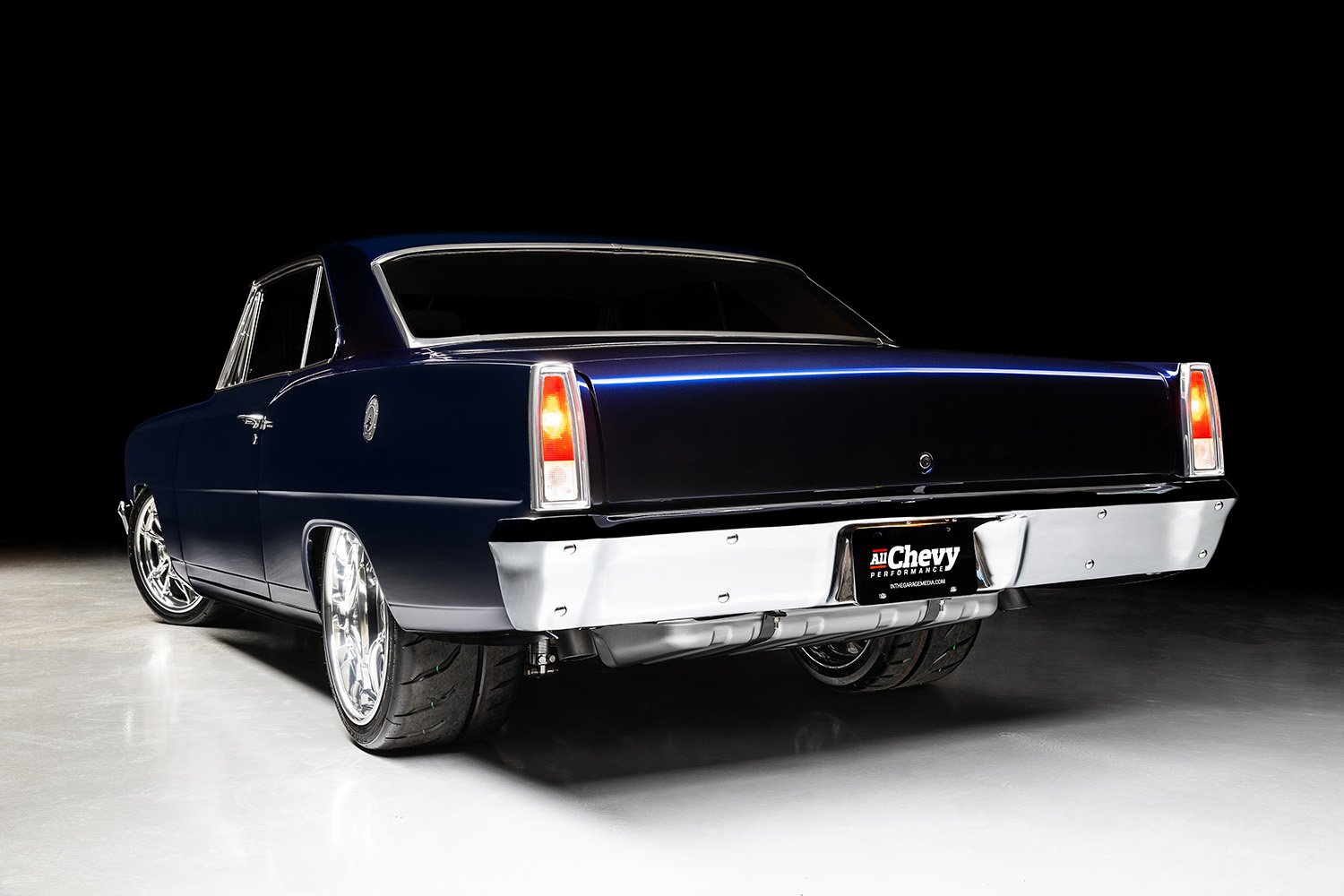
Locating the right car can be an exhaustive process, and sometimes it comes to you. Dan spent a few months looking, but he notes, “I was driving through Reading, Pennsylvania, and I saw a red 1966 sitting in the back of this guy’s place.” He further adds, “It had been in the guy’s family since the 1980s and at some point they put a 327 in it, painted it Fire Red, added headers, Thrush mufflers, and Cragars. They regularly took it to local shows, and that’s how it sat. It had some rust, and it was your typical driver, so we bought it in 2013 and drove it as a beater.”
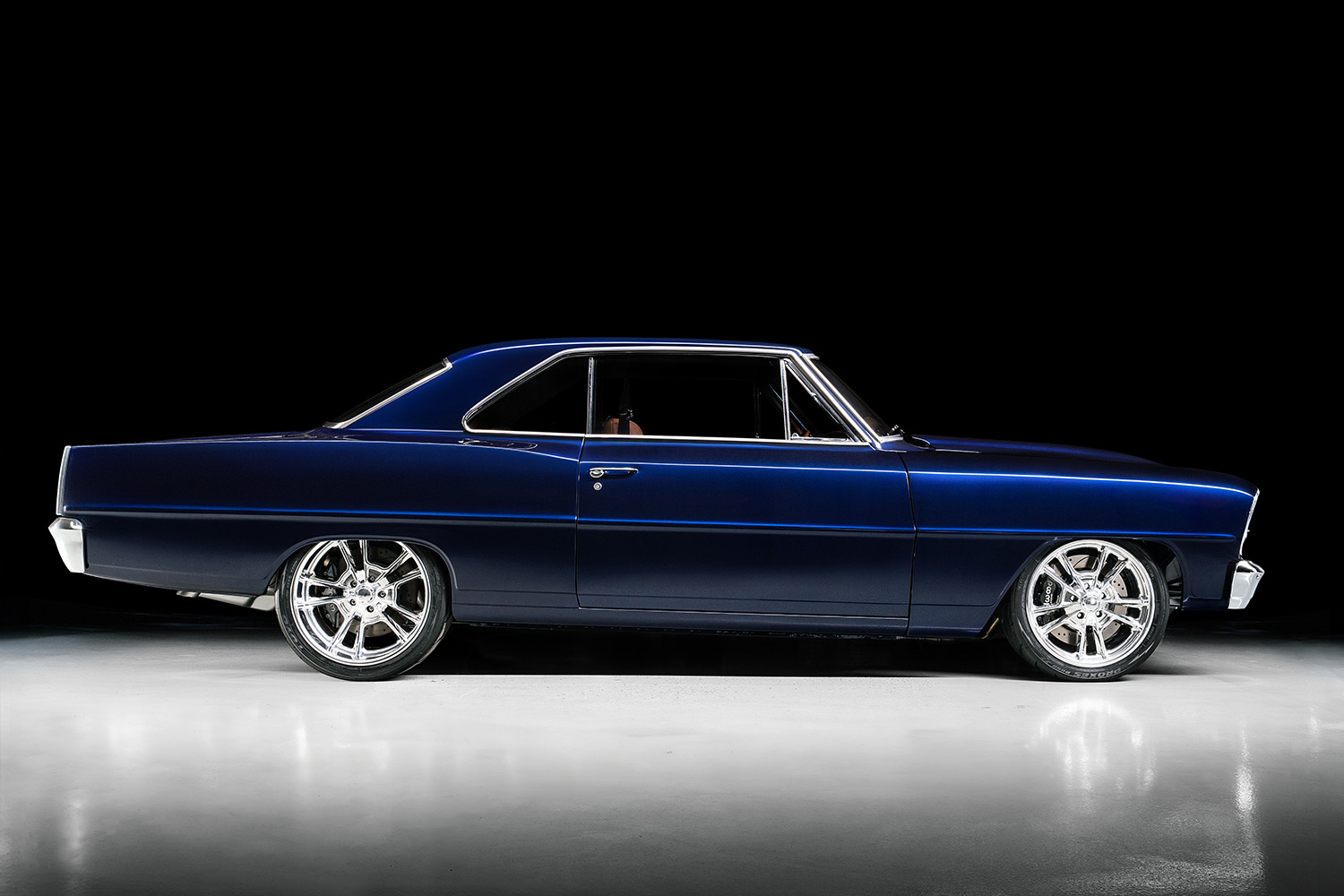
That status lasted a few years, and as Dan worked on some of his other cars during that time, Joan would often ask, “When are you going to do my car and make it nice?” In 2019 he decided that it was time to dig in and elevate it from the beater status to a “nice driver.” Taking it to that level meant dealing with the rust issues, applying a fresh coat of paint, and making it safe and reliable. Joan didn’t want to deal with a carbureted engine, so that meant an LS swap—for Dan that was going into uncharted waters. As is often the case when projects like this start out and plans are made, they can quickly unravel in magnitude and direction.
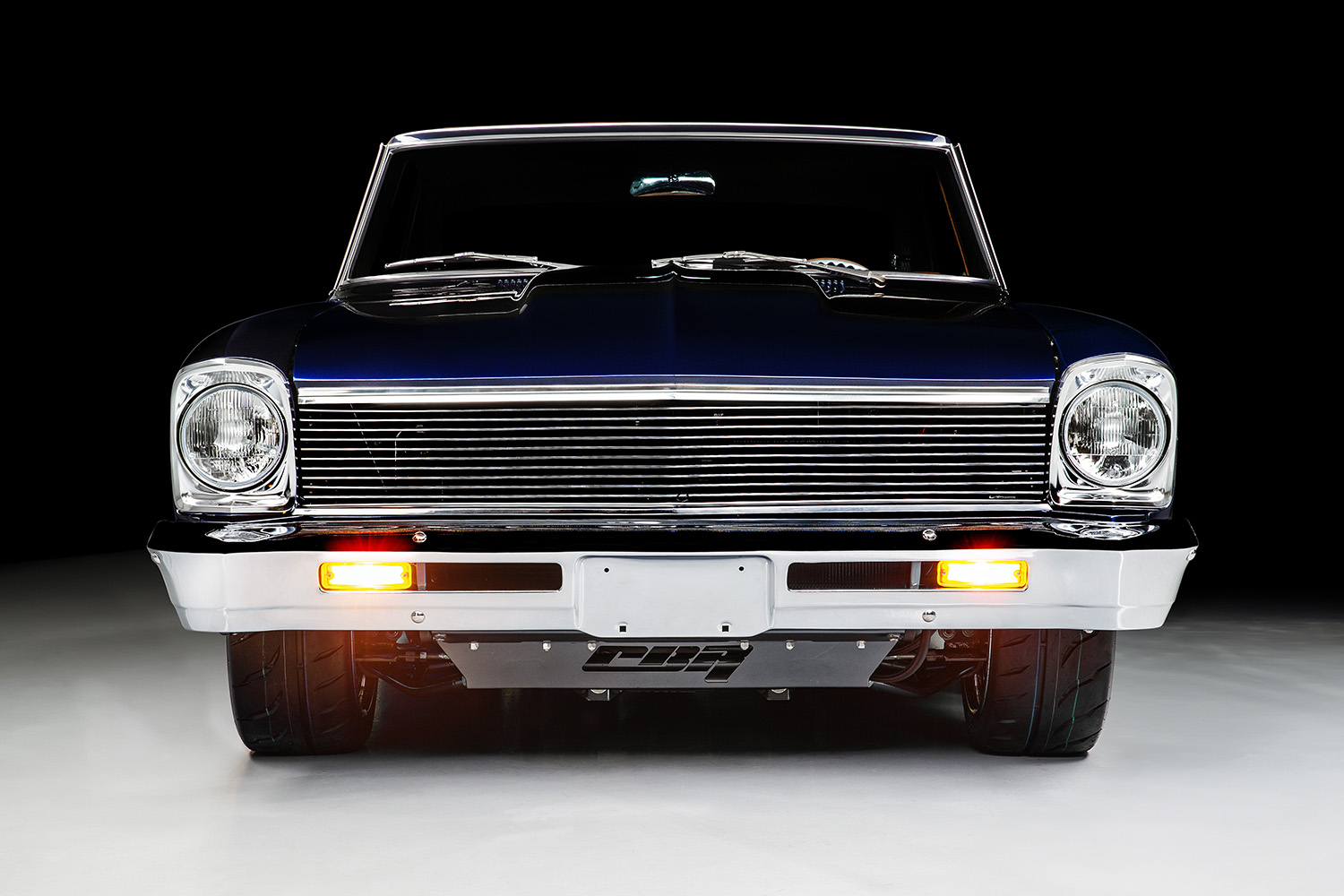
After he had the car torn down, it was placed on a rotisserie and the underside media blasted. From there AMD floorpans and some widened mini-tubs were fitted, and once that was done a coat of paint was needed. Keeping with the “nice driver” approach, which in many ways translated into “budget-friendly,” Dan states, “I had to paint the underneath with something but I just didn’t want to buy more paint. I had extra Gray Titanium Metallic paint leftover from the other cars, so I put the basecoat/clearcoat down and it looked great.” At that point the slide down the rabbit hole had just started. High on the list of upgrades was a better suspension and brake setup, so that was quickly addressed with the addition of a Church Boys Racing 1962-1967 Nova modular front subframe kit, along with a 2×2.5-inch steel box frame that he fabricated and welded in.
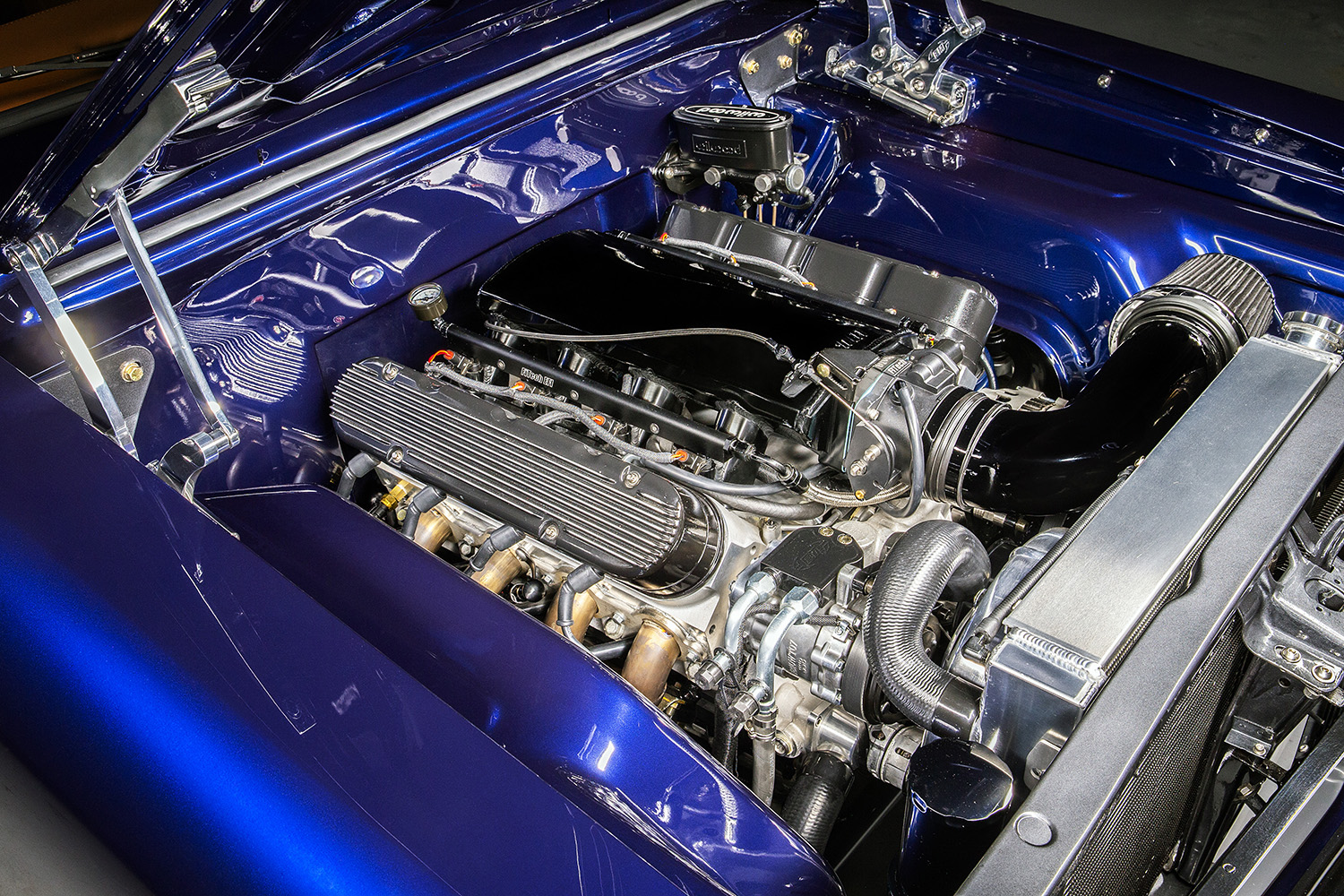
The work performed up to that point was a one-man operation, but once things shifted to the body, Dan enlisted the help of his buddy Bob Brooks. As they addressed the body issues some of the original metal was replaced with aftermarket pieces. This was one of the frustrating aspects that Dan faced, and he notes, “It seemed like it was physically impossible to take the original panels and mix in aftermarket quarters and front fenders and get acceptable gaps that didn’t look ridiculous.” It was a big headache with much of the work being learn-as-you-go for the pair. Duane Mellinger, who would eventually lay down the paint, would stop by regularly and advise on what needed to be changed to get the car to the primer stage. On the color choice, Dan envisioned it in some House of Kolor orange, while Joan gravitated toward a shade of blue, and she subtly had to remind him “that would be a cool color, but it’s not your car.” Her choice ended up a mix of blues, and when it reached that threshold, it was torn down and sent to Superior Paint & Collision in New Holland, Pennsylvania, for the PPG basecoat/clearcoat Custom Midnight Blue laid down by Mellinger.
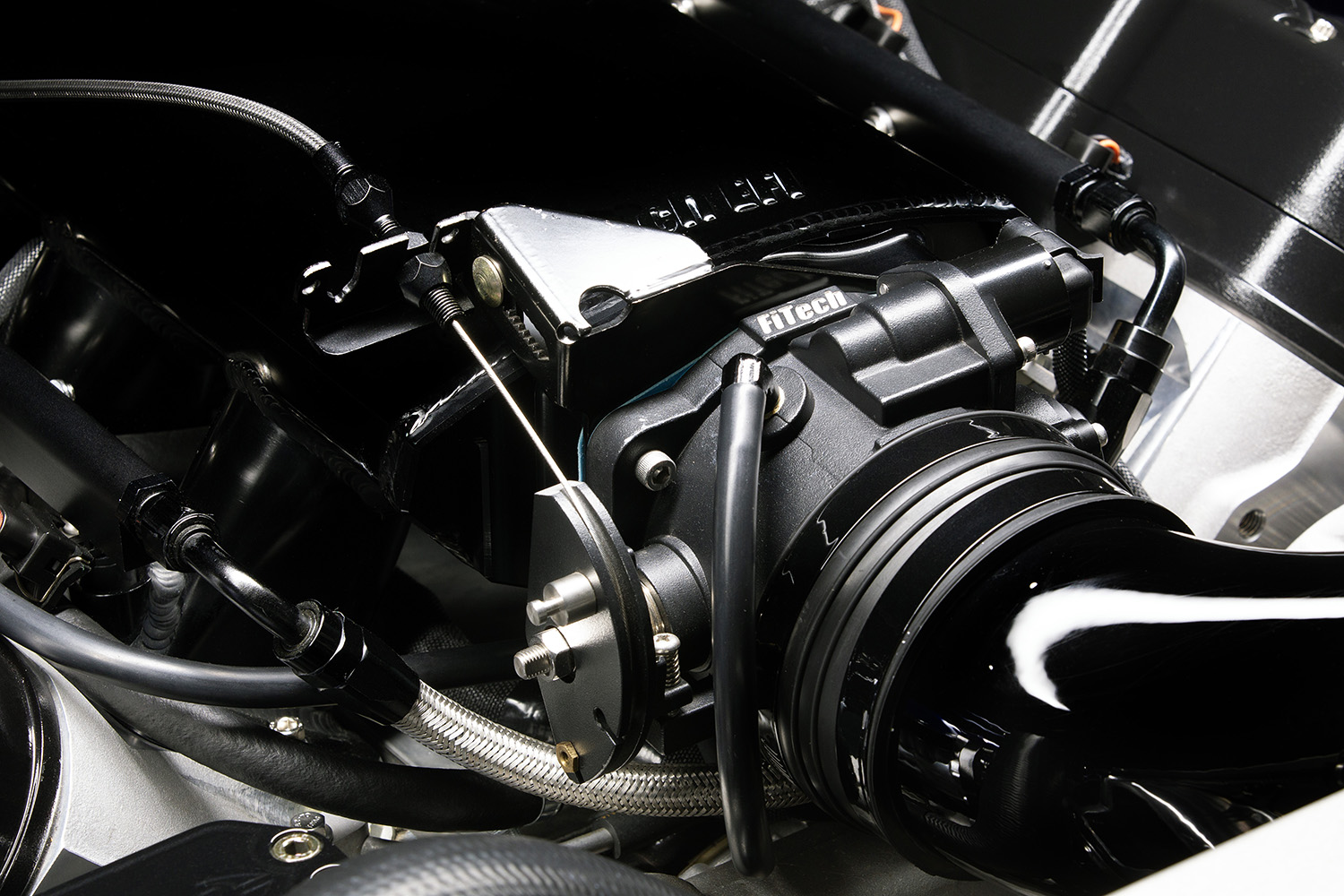
On the propulsion side of the build, the original plan was to have Ohio Speed Shops in Niles, Ohio, build a fresh LS3. As with the body and suspension parts, this build was moving forward during the COVID-19 lockdown, and getting anything in a timely manner became an issue. Dan recalls, “I waited and waited for the engine. I called to find out what was going on and was told that the factory was behind pouring the iron blocks for the LS3, but then they said that if I was willing to pay an extra $250 they had an all-aluminum 427 650hp long-block. Of course, I was willing to pay.” Backing that up, Dan went with a fresh GM 4L70E that delivers power to the Moser Ford 9-inch rearend.
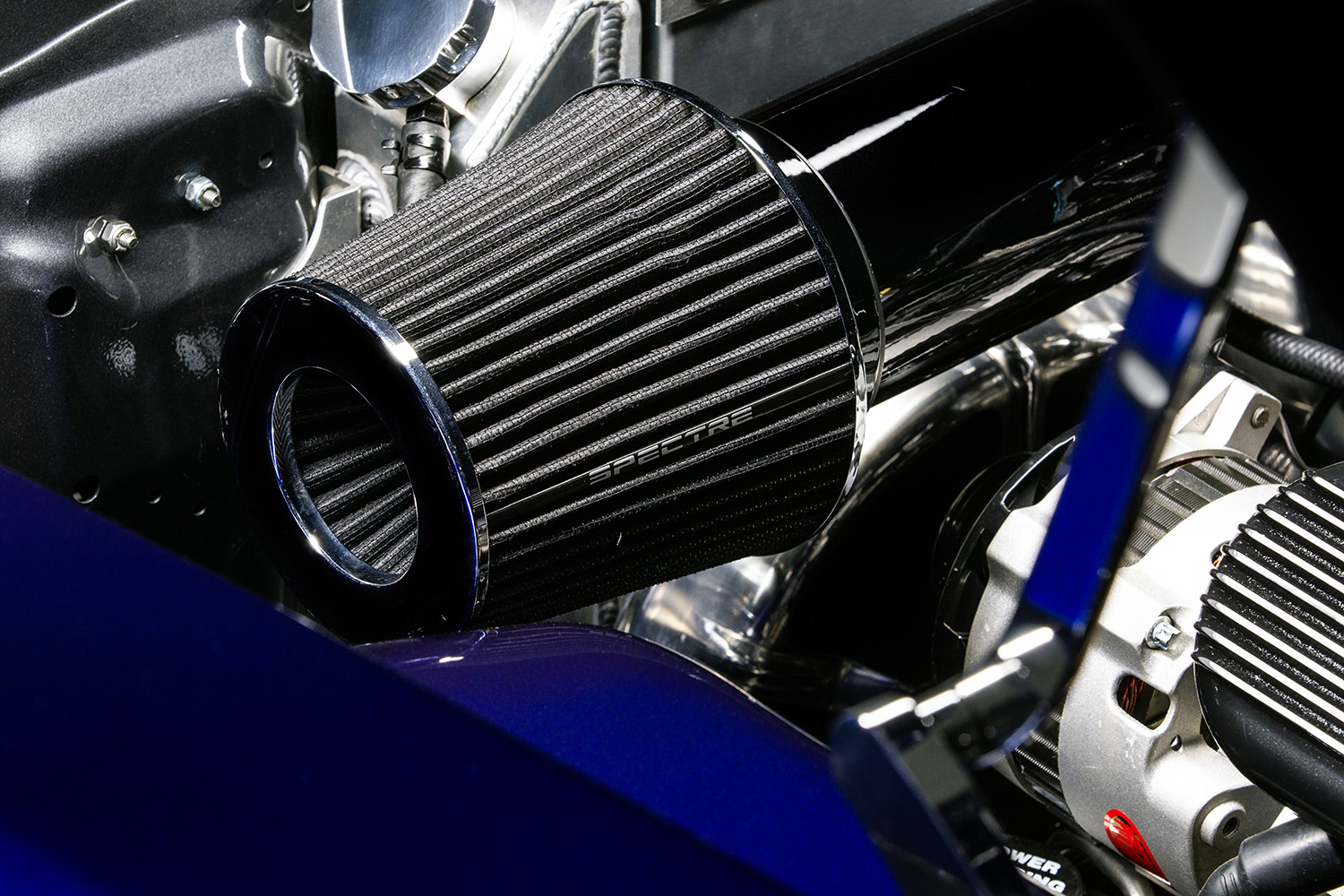
Wheel choice involved some negotiations with Joan, but they ended up choosing modified Billet Specialties Vintage inspired Grinder wheels measuring 18×8 in the front, and a stout 19×12 in the rear. They were wrapped in Toyo Proxes R888 rubber on all four corners. The braking upgrade involved a set of Wilwood 14-inch rotors front and rear along with six-piston calipers front and four-piston rear.

The interior was the last major part of the build, and Joan wanted it to be clean, simple, and appear timeless. She looked at various swatches and came up with a tan color that she liked. When they took the car to J&A Custom Interiors in Nazareth, Pennsylvania, the shop owner said that her color choice was going to ruin the look of the car. His opinion was that it should be black; Joan stuck to her guns. After looking at it sitting in his shop, he called and said she was right on her color choice. Shortly before the work started, he called asking Dan if he was willing to spend an extra $500? I’m like, “What now?” he recalls. He was at the leather wholesaler and they had five skins of Rolls-Royce Kalahari leather that were rejected because they were too light. His answer was a simple, “Get it.” After the interior was wrapped up, it made one final trip to Quality Custom Rides in Lancaster, Pennsylvania, for the installation of a complete Ron Francis Wiring kit. That was the last hurdle before returning home. At that point Dan and Brooks started the task of putting the rest of the car together with the finish line at the end of 2022.
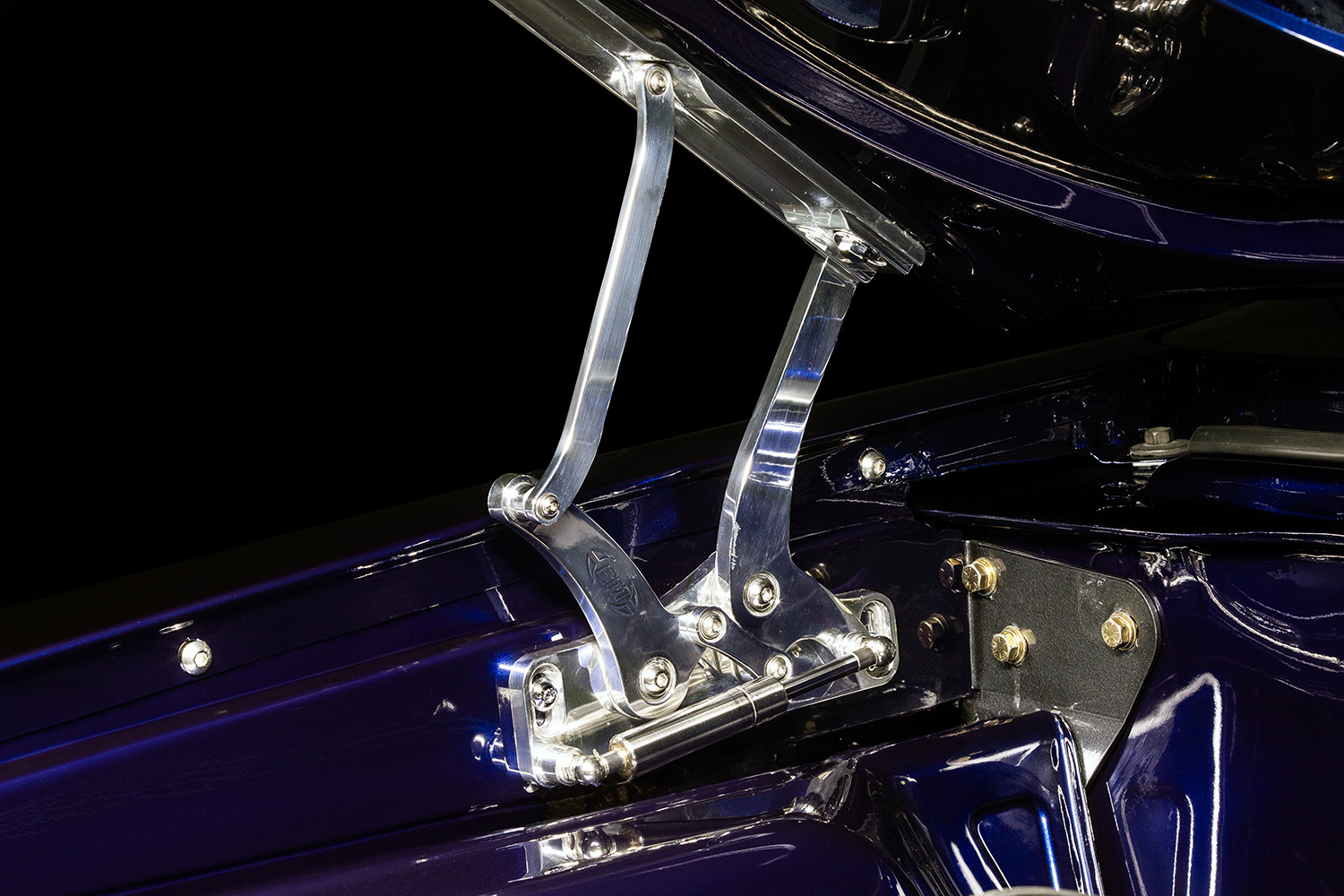
When asked of his impressions and what he would have done differently, Dan states, “This car turned out way better because one thing led to another. We’re not professionals, but we built it as best we could in our garage. One thing I might have done differently is opt for a turbo engine.”

Freed of its “beater” label, the Nova is now a car that Joan enjoys regularly as it lives up to its “nice driver” status.
Check out this story in our digital edition here.
TECH CHECK
Owner: Joan West, New Holland, Pennsylvania
Vehicle: 1966 Chevy Nova II
Engine
Type: 2022 Chevrolet LS3/7L aluminum block
Displacement: 427 ci
Compression Ratio: 11.0:1
Bore: 4.069 inches
Stroke: 4.125 inches
Cylinder Heads: BluePrint Engines LS3 L92 72cc aluminum
Rotating Assembly: Forged crankshaft, forged connecting rods, forged aluminum pistons
Valvetrain: 72cc, 2.165/1.60 valves, dual valvesprings, 1.7 ratio roller rockers
Camshaft: Hydraulic roller
Induction: FiTech Ultimate intake, FiTech 102mm throttle body, FiTech Ultimate LS ECU
Assembly: Ohio Speed Shops (Niles, OH)
Exhaust: Stainless Works LS long-tube headers, Stainless Works 3-inch exhaust, Stainless Works chambered mufflers
Ancillaries: Eddie Motorsports valve covers, K&N air cleaner, Entropy aluminum radiator, Eddie Motorsports drive system, Ricks electric fan, Rick’s Tanks fuel tank, Powermaster alternator, Eddie Motorsports hood hinges
Output: 640 hp at 6,500 rpm, 551 lb-ft at 5,400 rpm
Drivetrain
Transmission: GM 4L70E
Converter: Performance Automatic 10.5-inch CNC billet torque converter, 3,000 stall speed
Driveshaft: Precision Shaft Technologies custom driveshaft
Rear Axle: Moser Ford 9-inch rear, 3.55:1 gears, Moser 31-spline axles, Auburn limited slip
Chassis
Front Suspension: Church Boys Racing 1962-1967 Nova modular front subframe kit, Church Boys Racing tubular upper and lower control arms, Wilwood 2-inch drop spindles, Viking double-adjustable coilover shocks, Church Boys Racing 1-1/8-inch Church Bar sway bar, Detroit Speed rack-and-pinion, 2×2.5-inch steel box frame fabricated by Dan West
Rear Suspension: Church Boys Racing Tri-4-Link, Viking adjustable shocks, Viking variable springs, widened mini-tubs installed by Dan West
Brakes: Wilwood 14-inch rotors front and rear, Wilwood six-piston calipers front, four-piston calipers rear, Wilwood master cylinder
Wheels & Tires
Wheels: Billet Specialties Vintage inspired Grinder; 18×8 front, 19×12 rear (modified)
Tires: Toyo Proxes R888; 225/40R18 front, 305/30R19 rear
Interior
Upholstery: Rolls-Royce Kalahari leather, Daytona weave brown carpet
Door Panels and Center Console: Custom made by J&A Custom Interiors (Nazareth, PA)
Seats: OER steel modified with custom foam and upholstery
Steering: Ididit column, Billet Specialties steering wheel
Dash: GM original wrapped in leather
Instrumentation: Dakota Digital HDX
HVAC: Vintage Air
Insulation: Dynamat
Interior Installation: J&A Custom Interiors (Nazareth, PA)
Wiring: Ron Francis Wiring
Wiring Installation: Quality Custom Rides LLC (Lancaster, PA)
Entertainment System: Pioneer head unit, Kicker Audio speakers
Exterior
Sheetmetal: AMD quarter-panels, AMD front fender, AMD doorskins, AMD 2-inch cowl induction steel hood
Sheetmetal Installation: Dan West
Bumpers: GM original
Headlights: Hella LED
Taillights: Eddie Motorsports billet LED
Grille: Matt’s Classic Bowties custom billet
Bodywork: Dan West and Bob Brooks
Paint: PPG basecoat/clearcoat Custom Midnight Blue
Paintwork: Duane Mellinger, Superior Paint & Collision (New Holland, PA)











